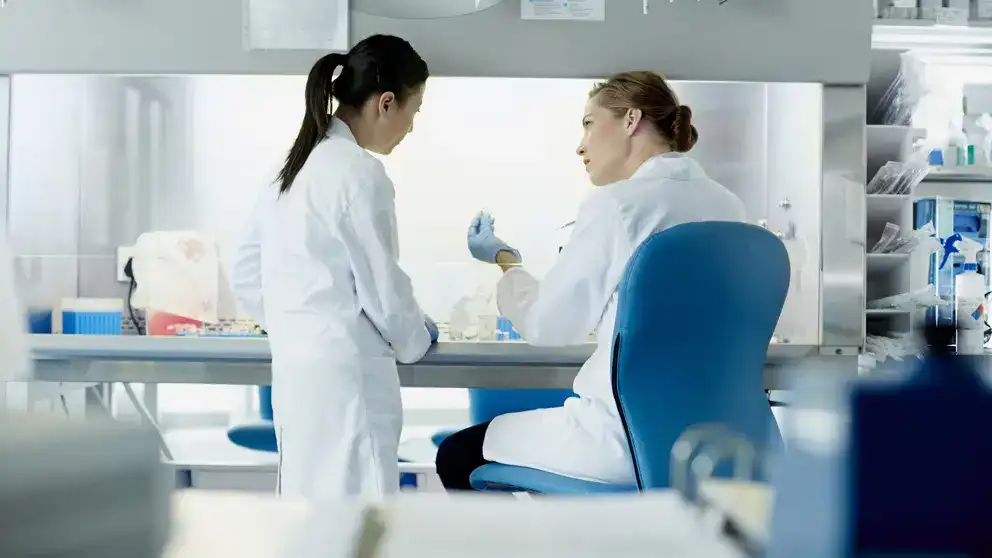Stroke research is a relatively new field compared with heart disease research. Common to both areas is the fact that most research has included more men than women.
Differences between women’s and men’s brain health are just starting to emerge. There is still a lot we don’t know.
But several new studies, funded through Heart & Stroke, are tackling aspects of stroke that have a particular impact on women, from risk factors through rehabilitation.

Predicting and preventing stroke risk during pregnancy: Pre-eclampsia, a pregnancy complication involving high blood pressure that occurs in up to 8% of pregnant women, is the strongest risk factor for stroke in pregnancy. Women who experience this condition also have an increased risk of heart disease and stroke later in life. Currently it’s difficult to predict or prevent pre-eclampsia. Dr. Craig Steinback from the University of Alberta is working to develop non-invasive assessments to identify which women are at risk and ways to prevent and treat pre-eclampsia. The potential benefits to women’s long-term health are significant ‒ along with improved pregnancy health outcomes for mothers and babies.

Helping women recover better: Dr. Lara Boyd of the University of British Columbia is studying people with severe stroke, including many women around the age of menopause. This group is under-researched and often not offered rehabilitation as the potential for recovery is thought to be poor. In research funded by the Heart & Stroke Foundation Canadian Partnership for Stroke Recovery, Dr. Boyd is hoping to change that. “We are identifying a biomarker that could be used to determine who is likely to show at least partial recovery in the acute stage after stroke,” she says. “This will allow us to identify these people — many of whom are women — and provide access to aggressive rehabilitation so that their recovery can be optimized.”
 Predicting mothers’ future disease: Dr. Nathalie Auger from the Centre hospitalier de l'université de Montréal is studying how complications during pregnancies can affect and predict women’s risk of developing heart disease and stroke later. She is looking at factors including birth defects, placenta disorders and mental illnesses that a woman develops during the first year after delivery, such as postpartum depression. Results will deepen understanding of how heart disease and stroke develop in women, and help medical professionals better identify, assess, and treat women who are at higher risk relatively early in their lives.
Predicting mothers’ future disease: Dr. Nathalie Auger from the Centre hospitalier de l'université de Montréal is studying how complications during pregnancies can affect and predict women’s risk of developing heart disease and stroke later. She is looking at factors including birth defects, placenta disorders and mental illnesses that a woman develops during the first year after delivery, such as postpartum depression. Results will deepen understanding of how heart disease and stroke develop in women, and help medical professionals better identify, assess, and treat women who are at higher risk relatively early in their lives.
 Innovation in rehabilitation: Dr. Kara Patterson, a Heart & Stroke Foundation Canadian Partnership for Stroke Recovery-funded researcher at the University of Toronto, is studying the use of dance for stroke rehabilitation. Dance has the potential to be helpful for neuroplastic change – the ability of the brain to reorganize itself by forming new connections – which can lead to improvement in balance and memory. It’s also a social activity that is both motivating and enjoyable. Dr. Patterson and her colleague Dr. Dina Brooks are studying whether dance can improve balance and walking for people following their stroke, as well as boost confidence and decrease feelings of social isolation, leading to improved overall quality of life.
Innovation in rehabilitation: Dr. Kara Patterson, a Heart & Stroke Foundation Canadian Partnership for Stroke Recovery-funded researcher at the University of Toronto, is studying the use of dance for stroke rehabilitation. Dance has the potential to be helpful for neuroplastic change – the ability of the brain to reorganize itself by forming new connections – which can lead to improvement in balance and memory. It’s also a social activity that is both motivating and enjoyable. Dr. Patterson and her colleague Dr. Dina Brooks are studying whether dance can improve balance and walking for people following their stroke, as well as boost confidence and decrease feelings of social isolation, leading to improved overall quality of life.

Protecting the brain health of young women: Dr. Thalia Field and her team from the University of British Columbia are investigating the treatment, prognosis and impact of CVT (cerebral venous thrombosis) on young women. This cause of stroke ‒ resulting from a blood clot in a vein ‒ is rare in the general population but is the second most common cause of stroke for women in pregnancy and within the first few weeks after giving birth. Three-quarters of CVT patients are women and 80% are under the age of 50. The study includes an innovative strategy to inform and empower patients and their families, as well as a component to identify potential solutions to poor representation of women in clinical trials in stroke.
- Learn more in the Heart & Stroke 2018 Stroke Report.
- See more Heart & Stroke research.

